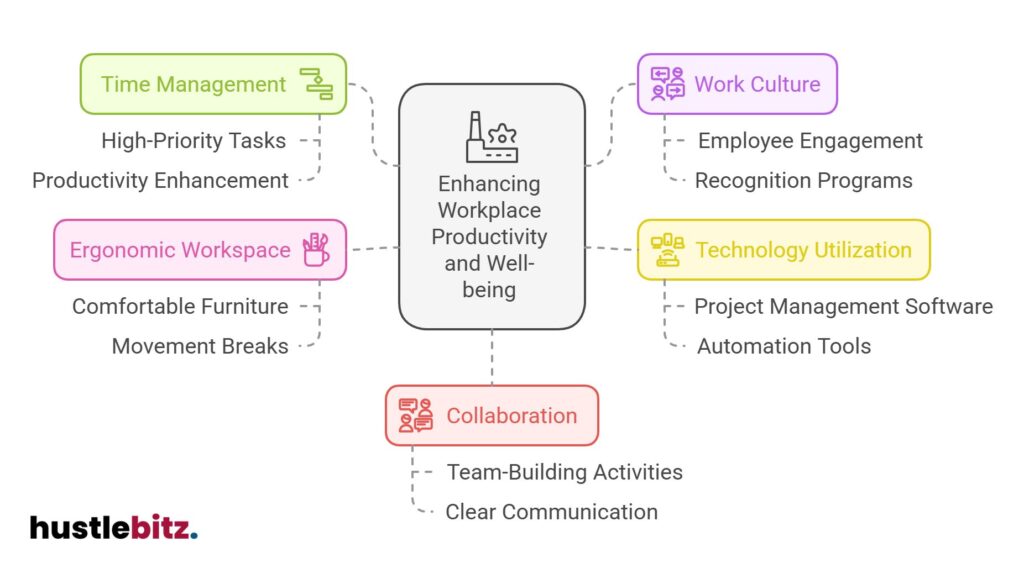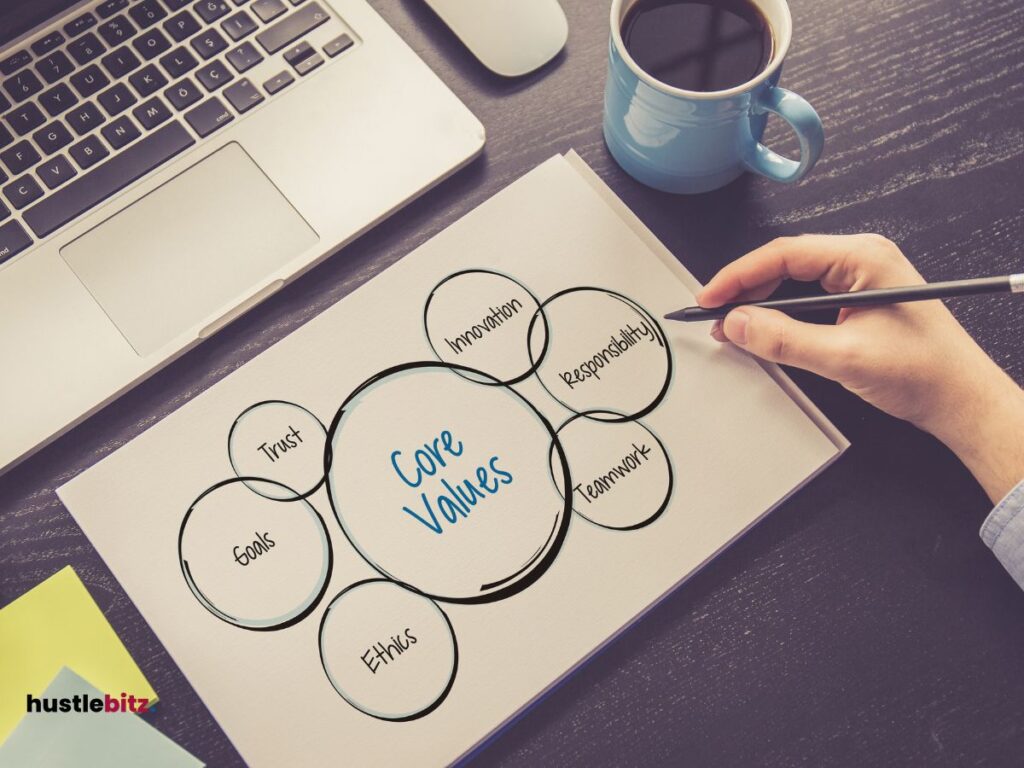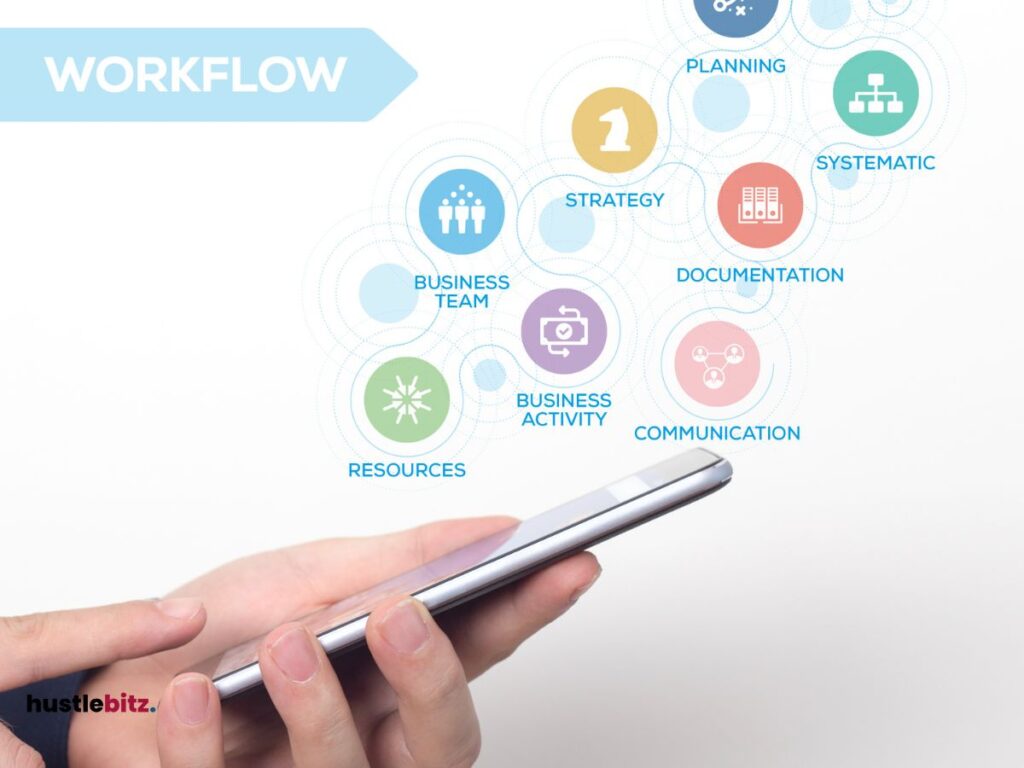To create a more efficient workplace environment, focus on core productivity elements such as effective time management, goal setting, and task prioritization. Designing an ergonomic workspace can reduce discomfort and enhance health, while fostering a positive work culture promotes employee engagement and collaboration. Implementing technology tools, such as project management software, streamlines workflows and reduces repetitive tasks. Encouraging work-life balance through flexible schedules increases employee satisfaction. Regularly tracking and measuring productivity using key metrics illuminates areas for improvement. Each of these strategies plays a pivotal role in enhancing overall workplace efficiency and effectiveness. More insights await to maximize your productivity efforts.
Key Takeaways
- Implement effective time management to focus on high-priority tasks and enhance overall productivity.
- Foster a positive work culture through employee engagement strategies and recognition programs to boost morale.
- Utilize technology and tools like project management software and automation to streamline workflows and reduce repetitive tasks.
- Design an ergonomic workspace with comfortable furniture and movement breaks to promote health and creativity.
- Encourage collaboration through team-building activities and clear communication strategies to strengthen relationships and improve teamwork.

Understanding the Core Elements of Workplace Productivity

Understanding the core elements of workplace productivity is essential, as it enables organizations to identify key factors that drive efficiency and employee engagement. Central to this understanding are effective time management practices, which allow employees to allocate their time wisely and focus on high-priority tasks.
Goal setting further enhances productivity by providing clear objectives, allowing teams to align their efforts and measure their progress. Task prioritization is another critical element, as it helps employees discern which activities yield the highest value.
This, coupled with workflow optimization, ensures that processes are streamlined, reducing bottlenecks and enhancing overall efficiency. Moreover, organizations that invest in resource allocation can better equip their teams with the necessary tools and support to thrive.
Employee engagement plays a pivotal role in fostering a productive environment. When employees feel valued and connected to their work, they are more likely to be motivated and committed.
Performance feedback is crucial in this context, as it provides individuals with insights into their strengths and areas for improvement, facilitating continuous improvement and skill development. Lastly, promoting stress reduction strategies contributes significantly to productivity.
A less stressed workforce is more focused, creative, and capable of maintaining high performance levels. By concentrating on these core elements—time management, goal setting, task prioritization, workflow optimization, resource allocation, employee engagement, performance feedback, continuous improvement, skill development, and stress reduction—organizations can create an environment that supports sustained productivity and employee satisfaction.
Designing an Ergonomic Workspace for Maximum Efficiency
Creating an ergonomic workspace is essential for maximizing efficiency, as it directly impacts employee comfort, health, and overall productivity. An ergonomic workspace incorporates various elements that promote well-being and effectiveness. Key factors include ergonomic furniture, effective workspace layout, and thoughtful tech integration.
Proper lighting effects and color psychology can enhance mood and focus, while noise management strategies help minimize distractions. Additionally, maintaining good air quality is critical for sustaining energy levels.
To illustrate these concepts, the following table highlights essential components and their benefits:
| Component | Benefit | Implementation Tips |
| Ergonomic Furniture | Reduces strain and discomfort | Use adjustable chairs and desks |
| Movement Breaks | Boosts focus and creativity | Schedule regular short breaks |
| Visual Organization | Enhances workflow | Use labels and color-coded systems |
A well-designed workspace layout that allows for personal adjustments can further enhance comfort and productivity. Employees should be encouraged to modify their environments to suit their individual needs. The integration of technology, such as standing desks and task management tools, can further streamline processes.
Fostering a Positive Work Culture to Boost Employee Morale
Fostering a positive work culture is crucial for enhancing employee morale and driving overall organizational success. A thriving workplace hinges on effective employee engagement strategies that promote inclusivity practices and open communication. When employees feel valued and included, they are more likely to contribute positively to the organization.
Recognition programs play a vital role in acknowledging individual and team accomplishments, fostering an environment where hard work is celebrated. This recognition can significantly boost morale, encouraging employees to strive for excellence. Additionally, implementing flexible schedules demonstrates a commitment to work-life balance, allowing employees to manage their responsibilities while remaining productive.
Trust building is essential for cultivating strong relationships among team members. Regular team bonding activities can enhance collaboration, create a sense of belonging, and reduce workplace stress. Furthermore, wellness initiatives contribute to a healthier workforce, promoting both physical and mental well-being, which is vital for sustained productivity.
A feedback culture is equally important, as it provides employees with opportunities for growth and development. By encouraging constructive feedback and facilitating career development discussions, organizations can empower their workforce to reach their full potential. When employees feel supported in their professional journeys, their morale and commitment to the organization naturally increase.
Utilizing Technology and Tools to Streamline Workflow

Leveraging technology and tools effectively can significantly streamline workflow, enhancing both efficiency and productivity in the workplace. The integration of automation tools allows for the repetitive tasks to be handled with minimal human intervention, freeing employees to focus on higher-value activities. By employing project management software, teams can achieve workflow optimization, ensuring that projects are tracked meticulously from inception to completion.
Digital communication platforms facilitate seamless interactions among team members, whether they’re in the office or working remotely. This shift has made task prioritization more effective, as employees can quickly share updates and feedback, reducing delays caused by traditional communication methods. Additionally, cloud storage solutions provide easy access to essential documents, promoting a collaborative environment that transcends physical boundaries.
Time tracking tools are invaluable for assessing how time is allocated across various tasks, enabling managers to identify areas for improvement. Software integration across different applications enhances overall functionality, allowing teams to work more cohesively and efficiently.
Moreover, with the rise of remote collaboration, virtual meetings have become critical in maintaining team engagement and ensuring alignment on project goals.
Encouraging Collaboration and Teamwork for Enhanced Productivity

Promoting a culture of collaboration and teamwork can significantly boost productivity by harnessing diverse skills and perspectives within the workforce.
Effective collaboration fosters an environment where employees feel valued and engaged, leading to innovative solutions and improved performance. Implementing team building activities is essential for strengthening relationships among team members, which enhances trust and communication.
Encouraging cross departmental projects can also facilitate the exchange of ideas and expertise, resulting in a more cohesive organizational culture. Utilizing collaborative tools, such as project management software and communication platforms, streamlines workflows and ensures that information is easily accessible. Establishing clear communication strategies, including regular check-ins and brainstorming sessions, allows teams to align their goals and share progress.
Furthermore, mentorship programs can provide valuable guidance and support, promoting professional growth while enhancing teamwork. In instances of conflict, having robust conflict resolution processes in place is crucial for maintaining a harmonious work environment. Regular feedback mechanisms should be implemented to ensure continuous improvement and to recognize contributions from team members.
Social interactions fostered through team lunches or informal gatherings can strengthen bonds, leading to increased collaboration. Lastly, incentive programs that reward teamwork can motivate employees to work together effectively, driving overall productivity.
Promoting Work-Life Balance to Sustain Long-Term Productivity

Achieving a healthy work-life balance is essential for sustaining long-term productivity, as it enables employees to recharge and maintain their overall well-being.
Organizations that prioritize this balance foster an environment where employees can thrive both personally and professionally, ultimately leading to enhanced employee engagement and productivity.
To promote work-life balance effectively, consider implementing the following strategies:
- Flexible Hours: Allowing employees to choose their working hours can improve time management and accommodate personal responsibilities.
- Remote Work Options: Providing the flexibility to work from home can reduce stress and enhance mental health, making employees feel more comfortable and focused.
- Wellness Programs: Initiatives aimed at promoting physical and mental health can lead to significant improvements in employee morale and productivity.
- Support for Family Activities: Encouraging leisure activities and family support systems can help employees maintain a healthy perspective and reduce workplace stress.
Tracking and Measuring Productivity: Key Metrics to Consider

To effectively track and measure productivity, organizations must identify and utilize key metrics that provide insights into employee performance and overall efficiency.
Establishing productivity benchmarks is essential for understanding how well teams are performing against established standards. Key performance indicators (KPIs) can include output measurement, which quantifies the results of employees’ efforts, and time management metrics that assess how effectively time is allocated to tasks.
An effective approach to productivity measurement also involves goal setting, where specific, measurable objectives are defined for employees. This clarity helps in workload assessment, allowing managers to ensure that tasks are appropriately aligned with individual capabilities. Additionally, efficiency tracking can reveal areas where processes may be streamlined or improved.
Moreover, task prioritization is crucial in maintaining focus on high-impact activities that drive results. Regular feedback loops between employees and management foster a culture of continuous improvement, enhancing employee engagement and motivation.
This engagement is vital, as it directly correlates with productivity levels; engaged employees tend to exhibit higher performance.
Final Thoughts
Creating a more efficient workplace environment is a multifaceted process that involves thoughtful planning, the integration of effective tools, and a commitment to fostering a positive work culture. By focusing on core productivity elements such as time management, goal setting, and task prioritization, organizations can significantly enhance overall efficiency. The design of ergonomic workspaces, coupled with the strategic use of technology, streamlines workflows and reduces unnecessary stress on employees. Encouraging collaboration and promoting work-life balance are equally crucial in sustaining long-term productivity. By regularly tracking and measuring productivity through key metrics, businesses can continuously refine their strategies to achieve higher levels of success. Ultimately, a well-rounded approach to workplace productivity not only improves output but also contributes to a more fulfilling and positive work experience for employees.




